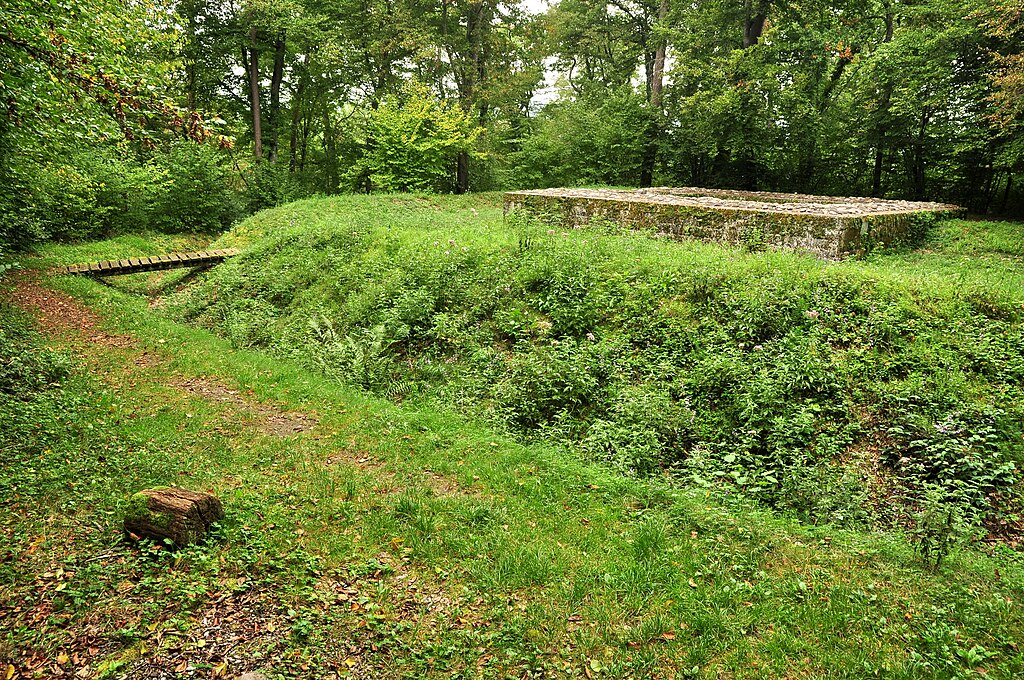To the south of Rheinau (to the south of Schaffhausen) a watchtower was discovered on the Rhine at the locality Strickboden, at a place called Köpferplatz. The tower was excavated in 1846 by Martin Berger, cellarer (in charge of provisions) in the Rheinau monastery, in 1908 by Jakon Heierli, and in 1953 by Emil Vogt. It was then restored.
View of the excavations in 1953. Photo: Germann-Isler 1954, Abb. 2.
Plan of the watchtower. Germann-Isler 1954, Abb. 8.
The tower was square and measured 9.90 x 9.90 m., with walls 1.70 m. thick. In the interior the excavators found a hearth and, in the centre, the lower part of a pier or the foundation of a post that supported the ceiling (1.10 x 1.30 m.). At a distance of 4-5 m. was a moat, 4 m. wide and 1.30 deep. It was surrounded by earthworks, also 4 m. wide. Objects were found around the tower and in a waste pit to the south: a few coins from the second half of the fourth century, ceramics, and metal objects, including parts of belts, arrowheads, part of a key, and a ladle. The tower must have been built during the reign of Valentinianus I, around 370 AD. It was destroyed by a fire. It was still used after the soldiers had left, by artisans making bone objects. As many as 93 bone objects were found, most made from red deer antlers. The objects were either waste or unfinished pieces. Combs, beads and perhaps amulets could be identified.
Some of the bone objects. Photo: Hedinger 2000, Abb. 6.

Views of the restored remains of the watchtower. Photos: Wikimedia, Roland zh.
Literature
Keller 1860, 330; Jahresbericht der Schweizerischen Gesellschaft für Urgeschichte 1 (1908), 70-71; 2 (1909), 101; 3 (1910), 106; Germann-Isler 1954; Drack-Fellmann 1988, 489-490; Drack-Fellmann 1991, 213-214; Hedinger 2000.
[30-Mar-2024]